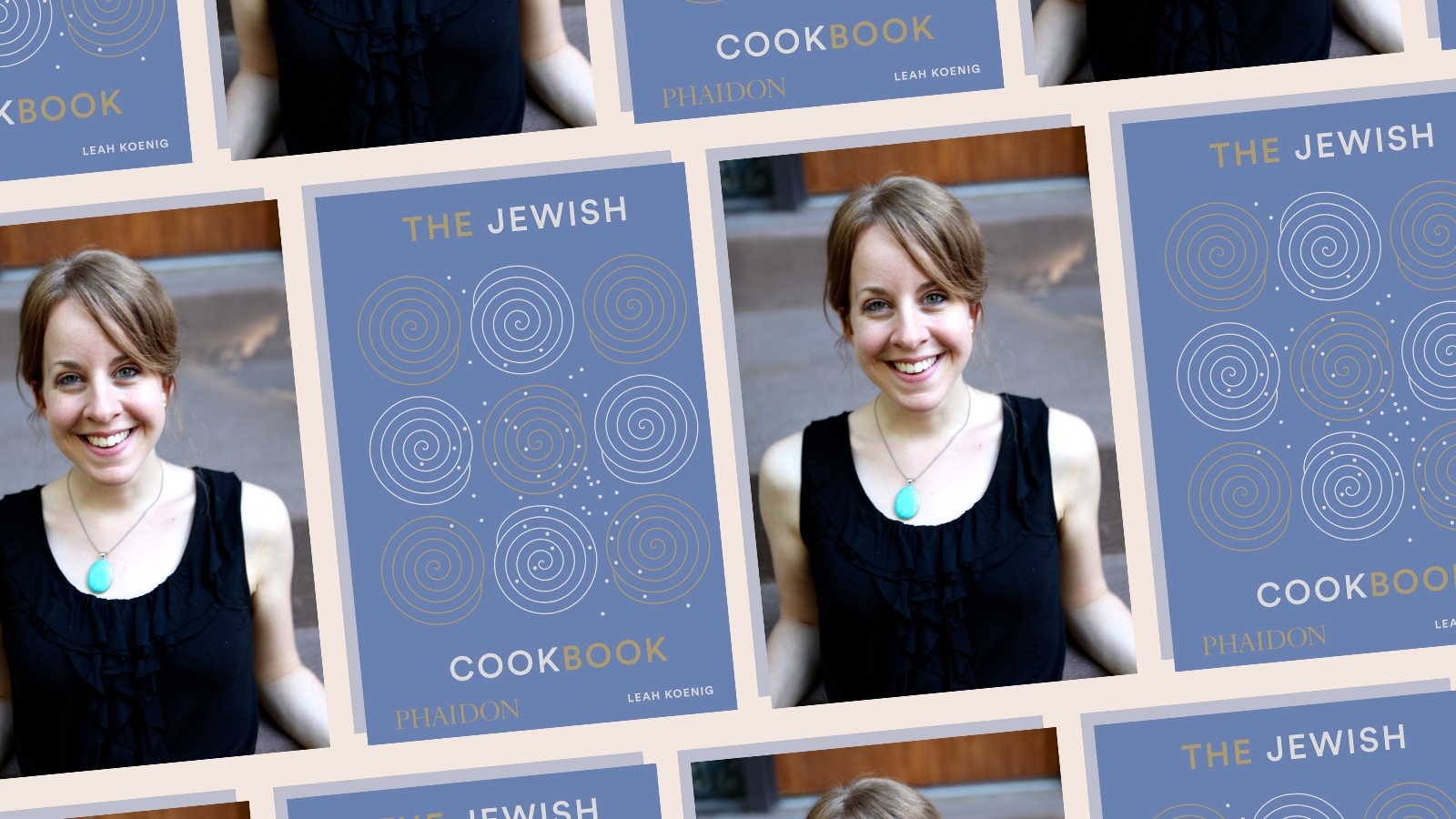Over the last decade, Leah Koenig has dedicated her life to researching and cooking global Jewish cuisine. Beginning her journey as editor of The Jew & The Carrot, the food and sustainability blog founded by the Jewish environmental organization, Hazon, Leah went on to write for the New York Times and the Wall Street Journal, among others. She’s also authored six cookbooks, including “Modern Jewish Cooking” and the recently released “The Jewish Cookbook.” This ambitious project features more than 400 home-cooking recipes for everyday and holiday foods, spanning the Middle East, the Americas, Europe, Asia and Africa. The book aims to “illuminate as many types of Jewish kitchens and tables around the world as possible,” and spans the gamut of Jewish food from matzah brei to sabich.
I chatted to Leah about the research process, Jewish dishes due for a comeback, and blintzes vs. challah French toast.
How did you go about starting to research this beast of a topic?
I’ve been writing about Jewish food for around 12 years. This book, in many ways, is a culmination of and building on what I had done before — things I had written about or researched, or that I’d gathered on travels, like to Rome or Israel. And I cooked with a lot of people. Living in Brooklyn, there’s such a wealth of Jewish diversity — a big Syrian community and a Russian community. I tried to get into as many kitchens as possible.
The Nosher celebrates the traditions and recipes that have brought Jews together for centuries. Donate today to keep The Nosher's stories and recipes accessible to all.
Go-to recipe from “The Jewish Cookbook”?
While it’s not a dish I grew up [being] familiar with, the chicken, scallion, and ginger fritters (arook tahine), which hail from Calcutta’s Jewish community, have become a staple. They are the most flavorful chicken patty ever, threaded through with fresh ginger, an entire bunch of scallions, fresh cilantro and jalapeño. They are so, so good.
How do you navigate culinary “borrowing”?
It’s a complicated question. Appropriation and borrowing is at the heart of Jewish cuisine. Jews have lived and cooked just about everywhere, so it’s only natural that they would cook the food of their neighbors and adapt it to fit kosher laws and the festivals. Hummus is perhaps the most current and politicized example, but another is borscht. In the U.S., we think of it as a Jewish dish because Jews helped to introduce and popularize it here, but in Ukraine it is not a Jewish dish at all.
Jews are more adapters and transmitters of cuisine rather than innovators — we’ve taken dishes and let them evolve. I don’t think that’s a bad thing; I think it’s a very unique and wonderful role to play in the world of food. Because of it, you have this gorgeous tapestry of cuisines from all over the world, with a through line of Shabbat, the holidays and kashrut.
What characterizes “American Jewish cuisine?”
There is no one characterization of American Jewish cuisine, I don’t think. It is an amalgam of the foods of many Jews who live here. It is a great pastrami sandwich and a perfect slice of babka from the Ashkenazi tradition. It is stuffed onions perfumed with allspice from Brooklyn’s Syrian community. It is a gorgeous platter of rice topped with a crispy tahdig layer in Los Angeles’ Persian community, and spinach burekas in Seattle’s Turkish and Greek Sephardi community. It is traditional and it is innovative, and everything in between.
Why do you think there’s been a return to roots in modern Jewish cooking? (Think: The Gefilteria, Eyal Shani, etc.)
There were a lot of crimes committed against Jewish cuisine — particularly Ashkenazi cuisine — in the 20th century! Overly greasy kugels; flavorless, dry, low-quality pastrami. Jewish food became something of a punch line in America, rather than something to celebrate.
Which Jewish dish is due for a comeback?
So many! But I have my heart set on bringing back two dishes: noodles and farmer’s cheese/cottage cheese and salami and eggs. They are such Ashkenazi comfort foods and both sort of fell by the wayside in the 1980/90s when everyone was afraid of fat. But they are both incredibly delicious and so worth the occasional indulgence.
Okay, let’s close with some quick-fire questions:
Challah or kubaneh? Challah.
Gefilte fish or chraime? Chraime!
Ptcha: Nice or nasty? So nasty.
New York, Montreal, or Jerusalem bagels? All of them.
Soups: Chilled or hot? Borscht: hot, schav: chilled.
Blintzes or challah french toast? Blintz soufflé! Best of both worlds.
Chocolate or cinnamon babka? Chocolate.
Best Jewish festival for food? Hanukkah!
Check out Leah’s recipe for Iraqi Chicken Stuffed With Spiced Rice from “The Jewish Cookbook.”



